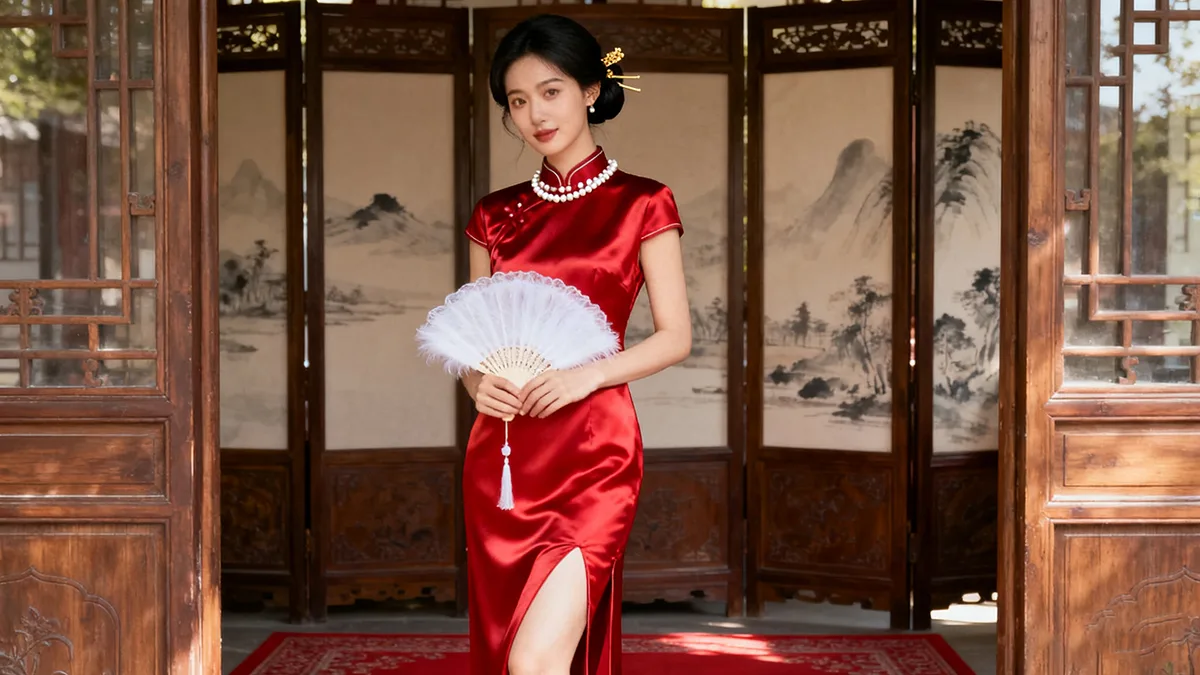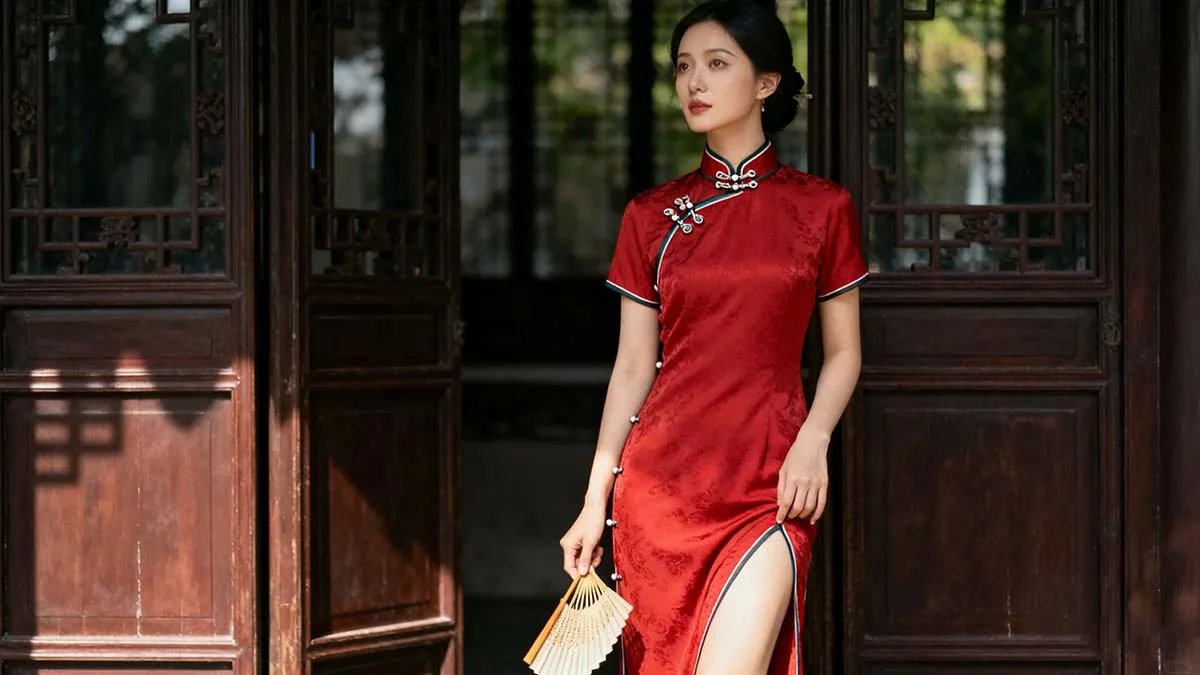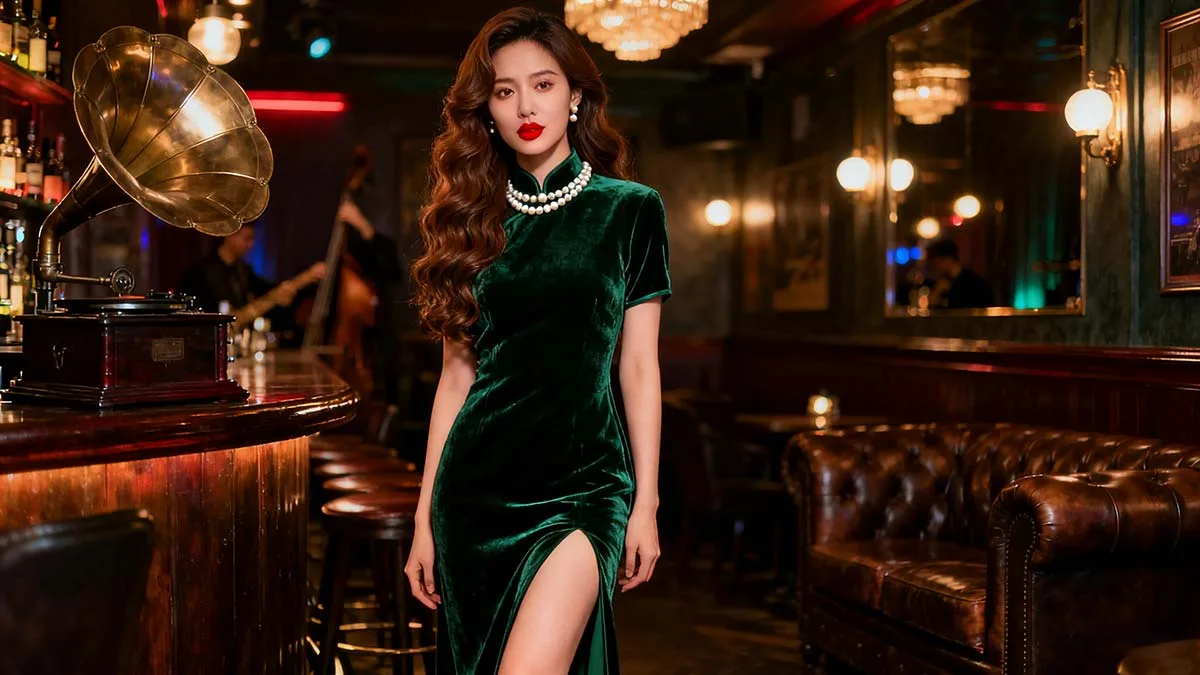What is Qipao
The qipao, literally meaning “robe of the banner people,” originated from the traditional robes worn by Manchu women during the Qing dynasty. Cihai, a renowned Chinese encyclopedia, defines the qipao as:
“Originally a long robe worn by Manchu women. After the Xinhai Revolution, it was also widely adopted by Han women. The modern qipao generally features a high mandarin collar, a right-side front opening, a fitted waist, and slits on both sides, with either short or long sleeves, and the length extending below the knees or to the ankles.”
The qipao, as we know it today, emerged in the early 20th century. Along its journey through history, it has preserved traces of different eras and carried deep cultural significance. In 1911, the Xinhai Revolution overthrew the Qing dynasty—the last feudal empire in China—and established the Republic of China. With this political transformation came major reforms in traditional Chinese dress. The Manchu-style robe, once exclusive to women of the Eight Banners, gradually gained popularity among Han Chinese women.
In 1921, a group of female students in Shanghai became the first to wear a modified long robe, marking the birth of the modern qipao. Their early version was a simple blue cotton gown with a straight, loose silhouette that reached the ankles. It featured minimal decoration—no piping along the collar, front, or hem—and slightly flared sleeves, giving it a dignified and restrained appearance. Once introduced on the streets, this new style immediately captured the attention of urban women, who soon began to emulate it.
Since then, the qipao has continued to evolve with changing times—its length, waistline, collar, and sleeves reflecting the shifting aesthetics and social moods of each era.
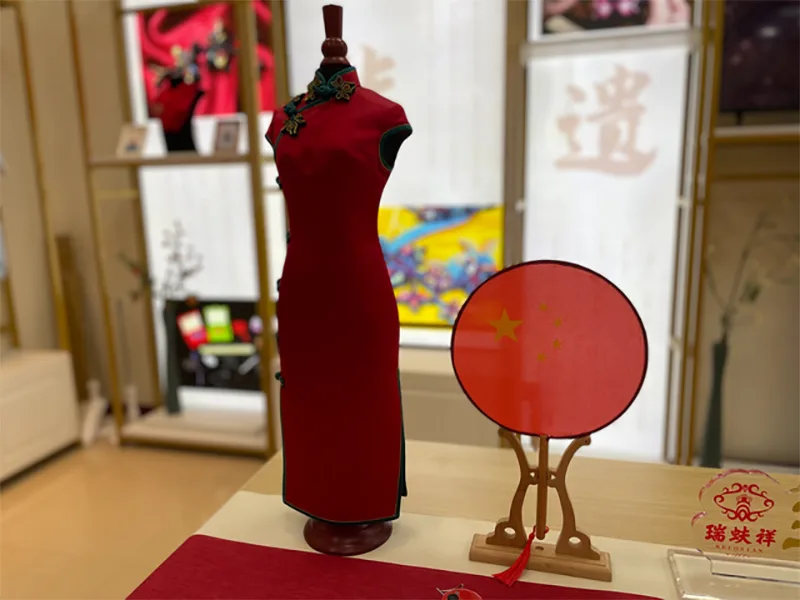
In the 1920s, the qipao began to gain popularity across China. At first, its design remained similar to the styles worn during the late Qing dynasty. Toward the late 1920s, however, Western fashion began to exert a deeper influence on Chinese clothing. The qipao went through several changes in length, width, slit height, sleeve style, and collar design. By around 1934, the once-tall collars that reached the ears gradually lowered, the waistline became slimmer, and the elegant curves of the female figure were finally accentuated.
The writer Liang Shiqiu once commented in his essay Women:
“Chinese women’s qipaos have seen countless variations. When the collar is high, it makes her look like a giraffe; when the sleeves are short, they seem to flutter with the wind. As for the buttons and embroidered trims, their endless transformations are beyond imagination.”
During the Republican era, the improved qipao—characterized by a small standing collar, diagonal front, and delicate pipa buttons—gracefully outlined the curves of Eastern women, boldly revealing slender arms and shapely legs. Celebrities such as singer Zhou Xuan, actresses Hu Die and Ruan Lingyu, writer Eileen Chang, and architect Lin Huiyin were all passionate admirers of the qipao. Their portraits in qipao still convey an air of refined elegance and subtle charm.
Eileen Chang, in particular, loved qipaos throughout her life. It was said that every time she received a royalty payment or a scholarship, her first thought was to commission a new qipao. When she made her literary debut in 1943, she wore a silk floral qipao in soft hues. In her iconic photograph from that period, she stands proud in a dark green printed qipao with a high collar and wide sleeves, chin slightly lifted. In 1995, Eileen Chang passed away wearing a brick-red qipao—quiet, graceful, and true to herself until the end. Her novels often mention women in qipaos, weaving their garments into stories of love, loss, and life’s bittersweet turns.
The Soong Sisters—Soong Ai-ling, Soong Ching-ling, and Soong Mei-ling—also left a profound impression with their appearances in qipao at various historical moments. At the founding ceremony of the People’s Republic of China in 1949, Soong Ching-ling attended in a qipao, her gentle smile witnessing the birth of a new nation. Soong Mei-ling owned hundreds of qipaos in various colors and fabrics, each carefully catalogued and numbered for convenience. Historical records note that when she moved to the United States in 1991, her private luggage included 99 crates—at least 50 of which contained her cherished qipaos.
Those who have read the novel Red Crag (Hongyan) will recall that the heroine Jiang Zhuyun, known as Sister Jiang, was also deeply fond of the qipao. When she first arrived in Chongqing to meet a comrade, “She appeared calm and composed, around thirty years old, of medium height, dressed plainly in a neatly tailored blue qipao.” Before her execution, “Jiang put on her blue qipao once more, draped a red wool cardigan over it, patted the dust from her clothes, and smoothed a few creases on her dress before calmly saying goodbye to her comrades.” Dressed in her qipao, she walked toward death with courage and grace.
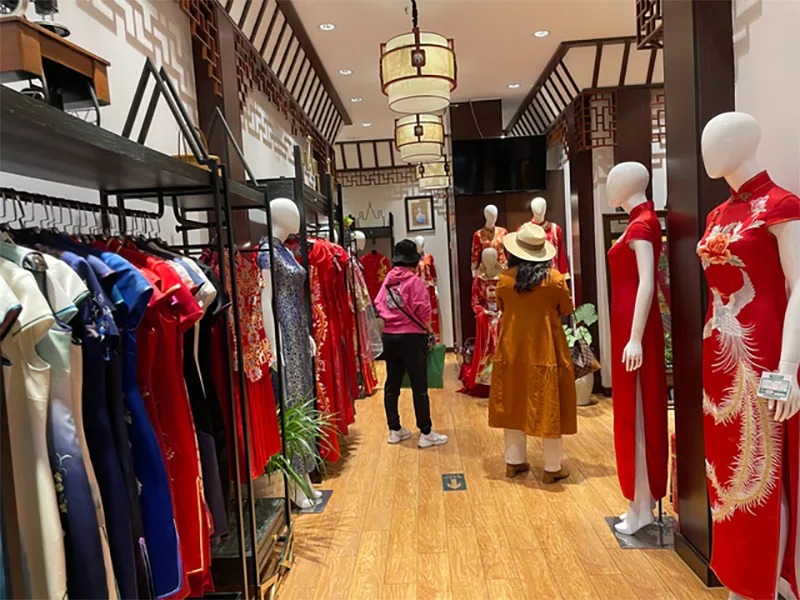
Since the founding of the People’s Republic of China, especially following the Reform and Opening-up, the standard of living has improved dramatically. The qipao, continuously refined and innovated, has won the love and admiration of women across China, becoming one of the most iconic garments for Chinese and overseas Chinese women alike.
Today, ordinary women wear qipaos in their daily lives; at large-scale evening events, many hosts and performers choose qipaos as their main attire; numerous female celebrities frequently appear in a variety of qipaos in films, television, and on the red carpet. Time and again, the Chinese qipao has sparked fashion trends around the world.
Qipaos come in many styles, including long qipaos, short qipaos, layered qipaos, and single-layer qipaos. The fabrics used to make qipaos are diverse, ranging from cotton, linen, and wool to silk, brocade, chiffon, and velvet. The choice of fabric greatly influences the style and aura of the garment. For example, a qipao made from dark, high-quality velvet exudes a sense of grandeur and luxury; one crafted from brocade conveys an elegant and enchanting Oriental charm; while silk is the perfect match for a qipao, allowing a finely tailored silk qipao to showcase the unique grace and allure of Eastern women.
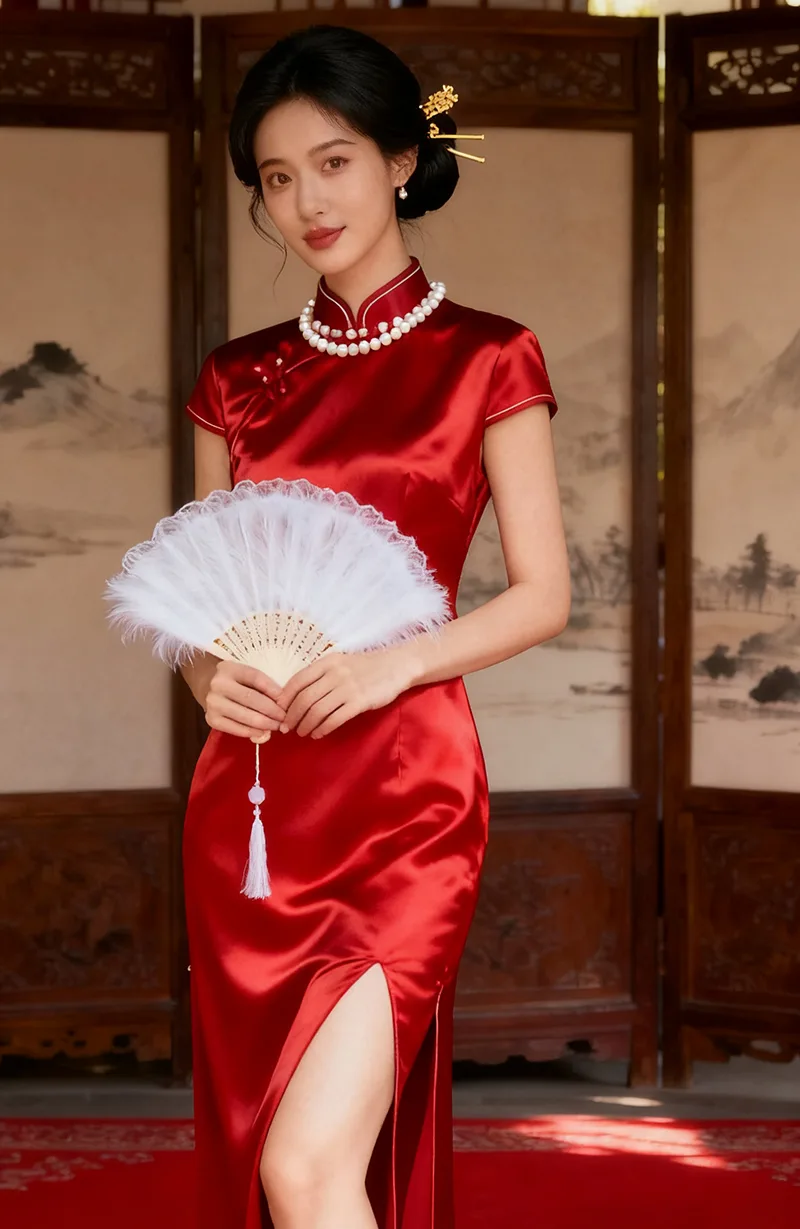
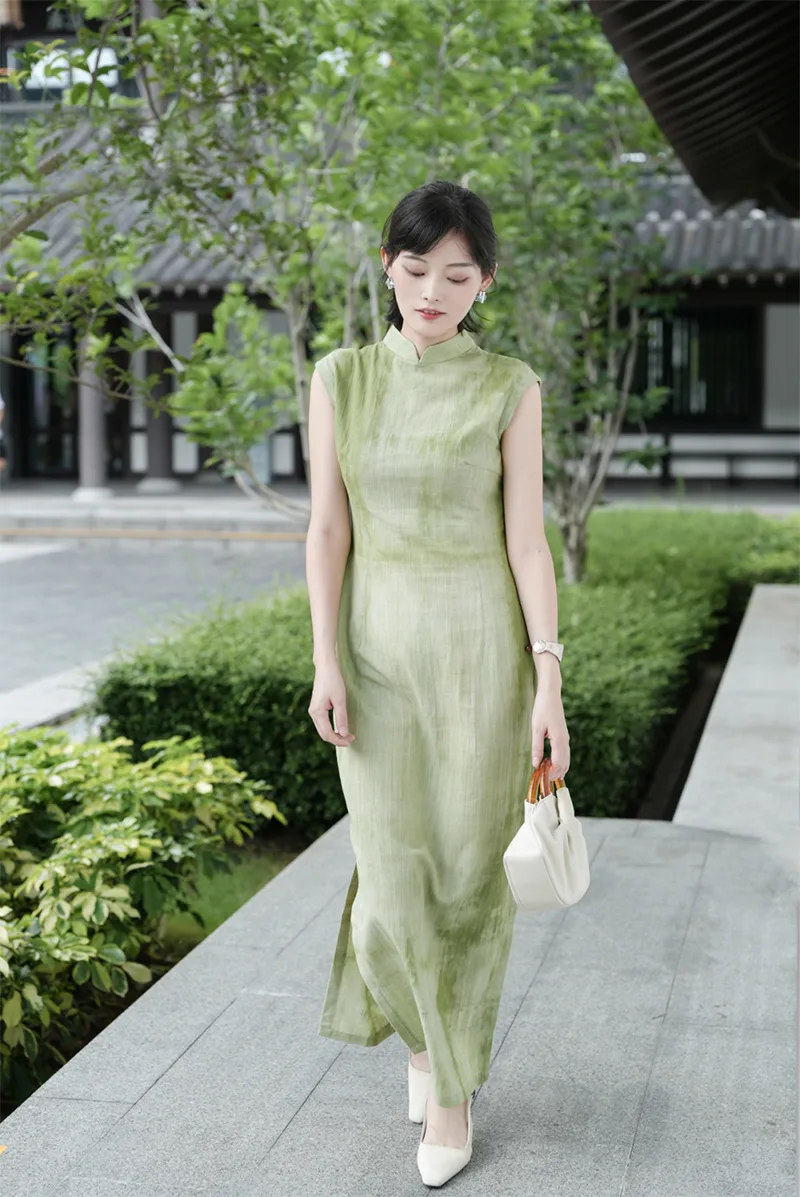
The qipao is born for women, and women become more beautiful because of the qipao. Its elegant charm has won the hearts of countless women, and the right qipao can perfectly highlight a woman’s grace and temperament.
As expressed in the song Qipao Woman:
“Last night, I dreamed of you again in the little tower, beneath the oil-paper umbrella—whose exquisite embroidery was woven there? The delicacy of silk, the softness of satin, jade-like fingers gently twisting the pipa buttons, steps like lotus petals gliding, hair clouds framing downcast eyes, a delicate figure moving through spring and autumn. In the narrow alley, your brocaded qipao sleeve leaves a lingering shadow, faint longing mingled with melancholy…
Qipao beauties in rosy hues, as radiant as the morning glow, a sea of silks and satins colors the bloom of youth. Willows bend, the slanting sun descends again; tea fragrance fills the halls of Ximen, and qipao beauties appear, as picturesque as a painting.”
This song perfectly captures the enchanting harmony between the qipao and women, illustrating how the traditional Chinese dress accentuates elegance, grace, and timeless feminine beauty.
Step into the world of elegance with our Qipao Collection. Each qipao is meticulously crafted to highlight your poise and charm, blending timeless tradition with modern sophistication. Perfect for special occasions or glamorous evenings, discover the style that makes you feel uniquely radiant and confident. Browse our collection today and make a statement in a classic Chinese icon.
